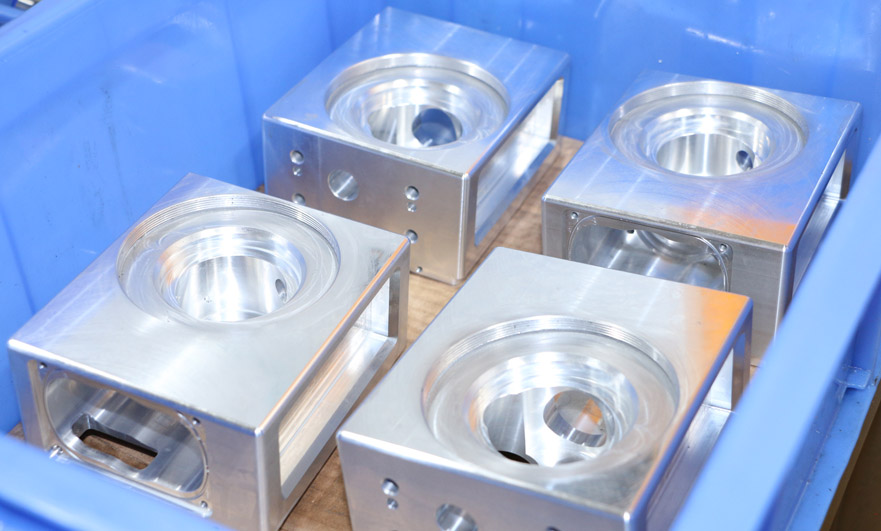15 years one-stop China custom CNC machining parts factory

Hey there I’m VMT Sam!
With 25 years of CNC machining experience we are committed to helping clients overcome 10000 complex part-processing challenges all to contribute to a better life through intelligent manufacturing. Contact us now
 230 |
Published by VMT at Dec 30 2021
230 |
Published by VMT at Dec 30 2021
Definition of roughness
The surface of parts machined by mechanical numerical control cannot be absolutely flat and smooth. In fact, there is a certain degree of macro and micro geometric error, which is generally expressed by the roughness value, so the surface roughness is an indicator reflecting the micro geometric error , The surface roughness value is the tiny peak and valley height and its spacing condition. In the past, the surface roughness of CNC machined parts was called surface finish. Surface roughness, as an important measure of the surface quality of CNC machined parts, not only directly determines the exquisite appearance of CNC machined parts, but also has a great influence on the assembly quality of the machine and the service life of CNC machined parts.
Tool geometry parameters
The main deflection angle Kr, the secondary deflection angle Kr' and the tool nose arc radius re are the major influences on the surface roughness of the tool geometry parameters. When the primary and secondary deflection angles are small, the height of the residual surface area of the CNC machined parts is also small, so the surface roughness can be reduced; the smaller the secondary deflection angle, the lower the surface roughness, but reducing the secondary deflection angle is likely to cause vibration, so Decrease the secondary deflection angle according to the rigidity of the machine tool. The influence of the tool nose radius re on the surface roughness: when the rigidity permits, the surface roughness will decrease when re increases. Increasing re is a good way to reduce the surface roughness of CNC machined parts. Therefore, reducing the main deflection angle Kr and the secondary deflection angle Kr' and increasing the radius of the tool tip arc can reduce the height of the residual area, thereby reducing the surface roughness of the CNC machined parts.
Physical factors
Considering the physical essence of the cutting process, the rounded corners of the cutting tool and the subsequent extrusion and friction cause plastic deformation of the metal material, which seriously deteriorates the surface roughness of CNC machined parts. When a band-shaped chip is formed by CNC machining of a plastic material, it is easy to form a high-hardness built-up edge on the rake face. It can replace the rake face and cutting edge for cutting, so that the geometric angle of the tool and the amount of back-cutting can be changed. The contour of the built-up edge is very irregular, which makes the surface of the CNC machined part appear with constantly changing depth and width. Some built-up tumors are embedded in the surface of CNC machined parts, which increases the surface roughness.
Vibration during cutting NC machining increases the surface roughness parameter value of NC machining parts.

Tool material
When the tool material has a high affinity with the metal molecules of the material to be processed by CNC, the material to be processed by CNC is easy to bond with the tool to generate built-up tumors and scales. Therefore, the surface roughness will be large if the bonding is serious or the friction is serious, and vice versa. Just small. CNC machining the same CNC machining parts, different tool materials obtain different surface roughness, such as CNC machining cast iron parts, hard alloy blades are difficult to reach the roughness of Ra1.6; while the BN-S30 or BN-K20 grades Cubic boron nitride has a low coefficient of friction of the tool material, and excellent high-temperature thermal stability and wear resistance, so the roughness of CNC machined cast iron can reach Ra0.8-Ra1.6.
Tool wear
Tool wear is divided into three stages: initial wear, normal wear and severe wear. Because there will be some burrs, irregular micro-protrusions, micro-cracks, etc. on the surface of the tool, in the initial stage of cutting, the wear is relatively severe, resulting in a large change in surface roughness; afterwards, it enters normal wear and the cutting process is relatively stable, so The variation of surface roughness decreases; as the amount of wear increases, the tool enters a severe wear stage, the wear rate of the tool flank surface rises sharply, the system tends to become unstable, the vibration increases, and the variation of the surface roughness Also rose sharply.
The influence of material properties of CNC machining parts
In general CNC machining of plastic materials, due to the extrusion and friction of the tool on the CNC machined surface, plastic deformation will occur, and finally the surface roughness value of the CNC machined parts will be larger; while the plastic deformation of brittle materials is small during CNC machining, which is easy to reach the surface roughness. Degree requirements. In order to reduce the surface roughness value of CNC machining, the material is often quenched and tempered or normalized before cutting CNC machining to obtain a uniform and fine grain structure and high hardness.
Ready To Start Your Next Project?
Get Instant Quote

Request a Free Quote
Send us a message if you have any questions or request a quote. We will get back to you ASAP!